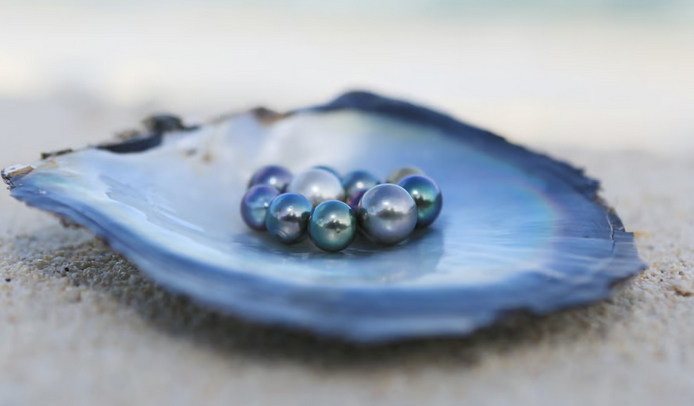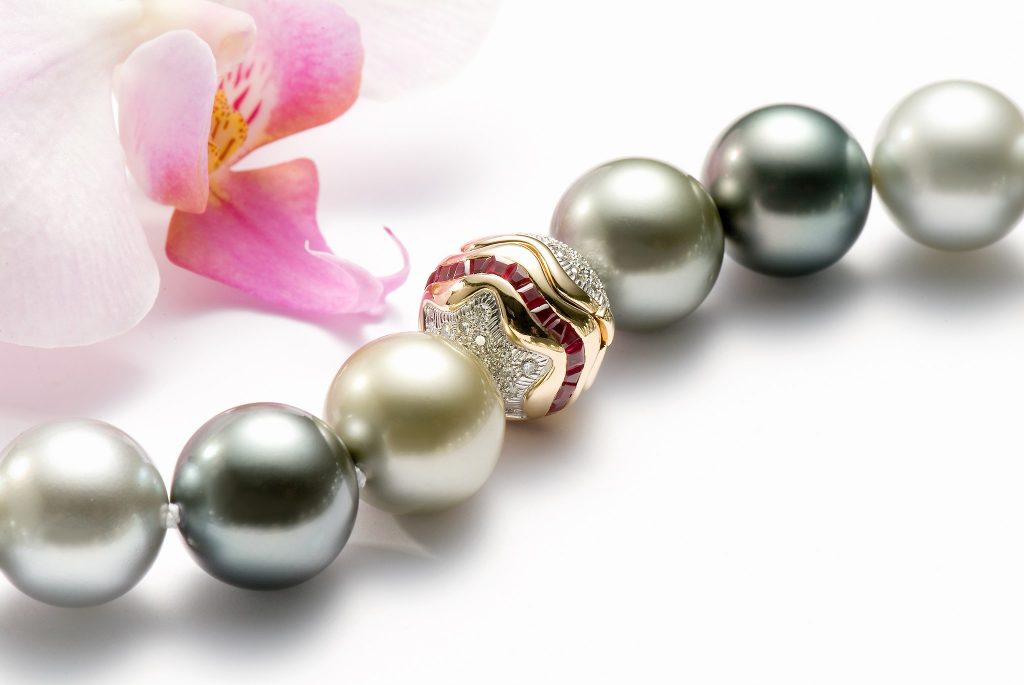For centuries, pearls have captivated the imagination with their timeless beauty and elegance.
Tahiti Black Pearls are produced by the black-lipped oyster, a species native to the warm waters of the South Pacific. The process of pearl formation begins when a tiny irritant, such as a grain of sand or a small organism, enters the oyster’s shell. In response, the oyster secretes layers of nacre, a crystalline substance, to cover and smooth the irritant, eventually forming a pearl. It’s this nacre that gives Tahiti Black Pearls their unique luster and color.

Black pearls are celebrated for their captivating array of colors, which range from deep shades of black and gray to peacock green, and even shades of blue. This diversity of colors is a testament to the oysters’ environment and the unique combination of factors that influence each pearl’s development.
Tahiti Black Pearls hold a special place in Polynesian culture. Known as “Manihi Pearls” or “Black Gold,” they are deeply valued and considered a symbol of prestige and wealth. These pearls are often incorporated into traditional jewelry, including necklaces, earrings, and bracelets, and they are proudly worn on special occasions.
In Tahitian society, gifting a Tahiti Black Pearl signifies deep affection and appreciation for the recipient.

Black pearls are Tahiti’s gift from the depths of the South Pacific. Their unique luster, stunning array of colors, and rich cultural significance make them highly sought after and cherished worldwide. The mystique and allure of these pearls are unrivaled, making them a symbol of luxury and sophistication embodying the magic of Tahiti’s pristine waters.
Visit the Robert Wan Pearl Museum in Tahiti on your Tahiti holiday

